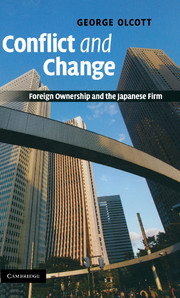Book contents
- Frontmatter
- Contents
- List of figures
- List of tables
- Acknowledgements
- Introduction
- 1 Japanese institutions: are they different?
- 2 The study: overview and methodology
- 3 Entering the firm: recruitment and training
- 4 Lifetime employment and career patterns
- 5 Reward systems
- 6 Female employees
- 7 Organisation and decision-making process
- 8 Discussion and conclusion
- Index
7 - Organisation and decision-making process
Published online by Cambridge University Press: 20 January 2010
- Frontmatter
- Contents
- List of figures
- List of tables
- Acknowledgements
- Introduction
- 1 Japanese institutions: are they different?
- 2 The study: overview and methodology
- 3 Entering the firm: recruitment and training
- 4 Lifetime employment and career patterns
- 5 Reward systems
- 6 Female employees
- 7 Organisation and decision-making process
- 8 Discussion and conclusion
- Index
Summary
Board of directors
Given the status of the Japanese company as an “organic community which admits selected recruits to life membership” as opposed to the paradigm of employment of the British company being based on the “contract, specific in its obligations and limited in time by a specified period of notice” (Dore, 1973, p. 222), it follows that the standing of the company's directors should be different. Dore likens the board of Hitachi to a “council of elders of the corporate community”, in contrast to the board of English Electric, a “collection of men appointed for their capacity to contribute to the direction of the company in the best interests of the shareholders” (p. 223).
At the top of the organisation, the concept of “leadership” as embodied by the CEO also deviates from the Anglo-Saxon norm, being about “creating the atmosphere within the firm that ensures that all employees work as hard and as conscientiously and as cooperatively as possible so that all the decentralised decision-producing structures of the firm produce the best decisions” (Dore, 1994, p. 381). The recent trend in the US for company boards where the majority of directors are external, and the increasing trend in choosing CEOs from outside the firm (Khurana, 2002), has not remotely affected Japan. The Japanese CEO is almost always an insider. Unless the firm is controlled by a foreign company, he is invariably Japanese (and, of course, male). He is on average much older than his counterparts in other countries 1 and is less well paid.
- Type
- Chapter
- Information
- Conflict and ChangeForeign Ownership and the Japanese Firm, pp. 192 - 216Publisher: Cambridge University PressPrint publication year: 2009

